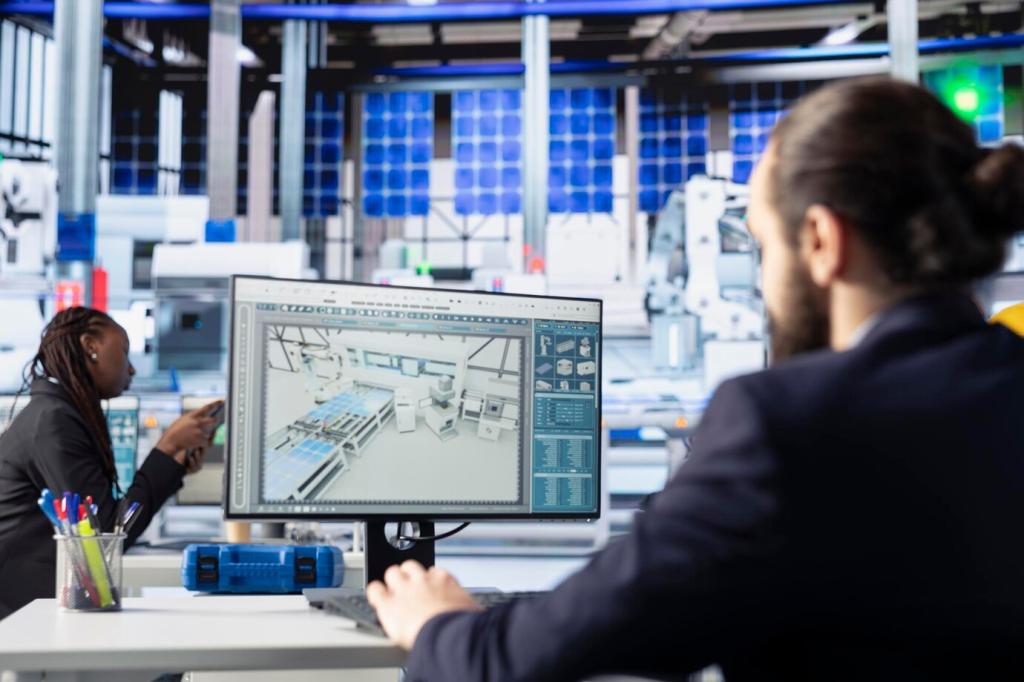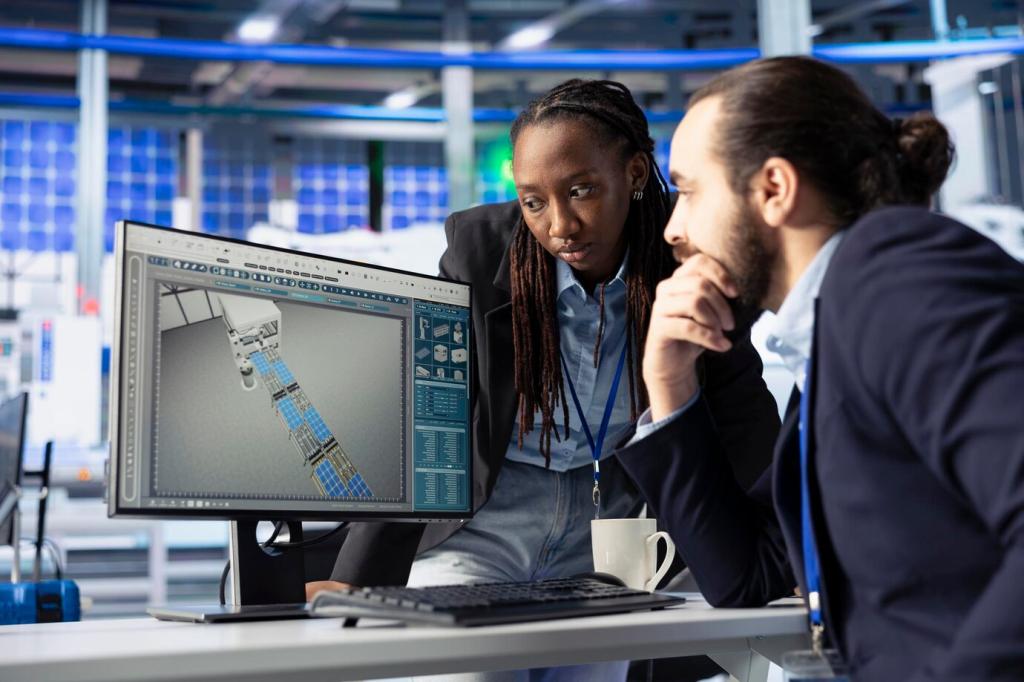Green Engineering Practices: Designing a Future That Works With Nature
Chosen theme: Green Engineering Practices. Welcome to our home for builders, makers, and curious minds who see sustainability as a creative constraint, not a compromise. Explore practical tactics, real stories, and measurable wins you can apply today. Comment, subscribe, and help us shape smarter projects together.
Foundations of Green Engineering
Green engineering practices start by eliminating hazards and waste at the source, not fixing them downstream. That means benign chemistry, right-sized equipment, and processes that avoid problem creation entirely. Share a project where preventing a risk upfront unlocked surprising savings and simplicity for your team.
Foundations of Green Engineering
Decisions in concept design lock in most environmental impacts. Use lifecycle assessment and Environmental Product Declarations to compare options, cut embodied carbon, and document choices transparently. What early-stage strategies—like slimmer spans, material-efficient grids, or shared structure—helped your team reduce intensity without sacrificing performance or safety?

Circular Materials and Low-Carbon Supply Chains
Optimize structure first, then specify mixes with fly ash, slag, or calcined clays, and pursue recycled-content steel while exploring near-zero options as markets mature. Verify performance with trials and EPD data. Have you used ultra-high-performance concrete to reduce volume or rebar layouts to achieve strength with less?
Mass timber, bamboo composites, and hemp-lime capture carbon while offering warmth and speed of assembly. Address moisture, acoustics, and fire with tested assemblies and clear detailing. Share how you balanced sourcing, certifications, local jobs, and durability when choosing bio-based materials for long-lived, adaptable, and repairable projects.
Fasteners over adhesives, standardized modules, and accessible connections let components live multiple lives. Material passports document origins and condition for future recovery. What reversible joinery or labeling systems have you used to make maintenance easier today and circularity practical tomorrow? Add your techniques, and subscribe to see community examples.
Energy Intelligence: Efficiency First, Renewables Next
Passive Design That Cuts Loads
Orientation, insulation, airtightness, shading, and daylighting can slash heating and cooling needs—Passive House projects often report up to ninety percent less heating energy in suitable climates. What passive move delivered the biggest comfort gains on your site? Tell us how you convinced stakeholders to prioritize it early.
Electrify with High-Performance Heat Pumps
Modern heat pumps often deliver three to four units of heat per unit of electricity with careful design. Pair with low-temperature hydronics, good envelopes, and smart controls for quiet, efficient comfort. Where have you replaced fossil boilers, and what grid, tariff, or backup considerations shaped your approach and sequencing?
Smart Controls and Continuous Commissioning
Sensors, analytics, and periodic re-tuning keep systems at their best as buildings and operations change. Dashboards can empower occupants and reveal hidden waste that drawings miss. What commissioning checklists or trend logs do you rely on, and how do you share insights with teams without overwhelming busy operators?
Water Stewardship and Ecological Engineering
Closing Loops with Reuse
Rainwater harvesting, greywater reuse, and onsite treatment reduce potable demand and build resilience during droughts and shocks. Start with end uses that tolerate non-potable supplies, and design maintenance into the plan. Have you mapped your facility’s water balance and uncovered unexpected opportunities to cut consumption responsibly?


Green Infrastructure That Works
Bioswales, rain gardens, and permeable pavements filter runoff, recharge aquifers, and cool neighborhoods naturally. A schoolyard retrofit we visited replaced asphalt with native plant basins, eliminating puddles and creating outdoor classrooms. What local landscape has inspired you to fold stormwater into place-making, education, and daily delight?
Measure, Verify, Improve
Carbon Accounting with Clarity
Differentiate operational and embodied carbon, and be explicit about Scope 1, Scope 2, and Scope 3 boundaries. Use transparent baselines and version-controlled assumptions. What LCA tools or EPD libraries have proven dependable for your team, and how do you communicate uncertainty to non-technical stakeholders constructively?
Standards and Certifications as Guides
Frameworks like LEED, BREEAM, Living Building Challenge, and WELL can sharpen priorities and align teams, even when certification is not pursued. Which credits or imperatives most improved your outcomes, and how did you avoid checklist thinking while keeping rigor and verifiable performance at handover?
Digital Twins and Operational Feedback
Link models to live data for predictive maintenance and performance tuning that lasts. A modest retrofit we profiled used submetering and a simple dashboard to uncover a mis-set economizer that cost thousands each year. What feedback loops ensure savings persist beyond the ribbon cutting on your projects?
People, Skills, and the Culture of Sustainability
A Field Story About Reuse
A site engineer told us how a last-minute switch to salvaged brick saved time after a supply delay and became the project’s favorite feature. What story convinces skeptics that sustainability is pragmatic, not just aspirational? Share it below, and help others argue for reuse with confidence.
Co-Design with Communities
Workshops and walk-throughs surface local knowledge about wind, shade, and daily patterns that drawings miss entirely. Inviting maintenance crews early reveals service realities that shape better details. How do you structure participation so quieter voices are heard, and how has that improved your green engineering choices?
Learning Pathways and Career Growth
Micro-credentials, toolbox talks, and mentoring can turn good intentions into reliable practice across teams and trades. Which training made the biggest difference for you this year? Subscribe and tell us, so we can compile a community-driven learning roadmap for sustainable engineering careers that scale impact.
